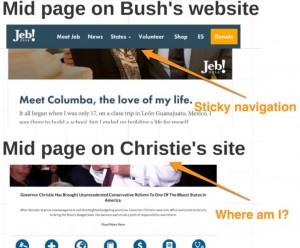
Vector image by freepik.com
I went through an interesting exercise a few months ago. I personally invited over 200 former colleagues to join my email list. There was no catch and no marketing. It was just a personal note via email or LinkedIn checking-in or catching-up and then asking if they might be interested in receiving emails about leadership, team development and workplace well-being, the focus of this blog.
60% said Yes. 40% didn’t reply. No one said No.
It is reasonable to believe that a portion of the Yes people and a portion of the “didn’t respond” people were not interested in the content or the email. To be certain, not everyone finds leadership development interesting.
That said, what prevented them from saying so? Something like, “Amy, great to hear from you! I’m not interested in the emails right now but thank you for thinking of me.”
This is a simple example of what I believe is a common problem for many, an aversion to saying No. It results in over-committed, unhappy, and tired people whose productivity (and health) is likely compromised because their focus is diluted across too many things.
No one wants to be this way, so why does it happen?
The reasons run the gamut and depend on the person. Some fear missing out on an opportunity, several want to avoid the discomfort created by saying no (believing they will hurt feelings), and others tell themselves a story that they are somehow weak or low performing if they do.
Regardless of the reason, let’s all get better at it. Saying no is empowering and highly respected by many. It demonstrates vision and confidence. Here are five tips to help you say No more often.
Clarify Priorities and Values
Knowing specifically what is important to you and your work will serve as guideposts for decision-making. Carve out time regularly to specify your priorities and align that work to your values.
Ask yourself, what do you want to accomplish today, this month, quarter, or year? Identify the impact you want to make by meeting those goals and post it in a visible spot to be routinely reminded.
Often, we say yes to requests because we have simply forgotten our intentions. Setting priorities and defining the impact we want to make helps ground us. Then, reflecting on and evaluating our progress also keeps the goals in focus. Plan, then reflect and evaluate. Repeat.
Buy Time with Questions
I once agreed to participate on a committee only to learn at the first meeting they were expecting me to lead the committee. I was stunned and frustrated.
Here is how it went down – I was briskly walking from one meeting to the next when a colleague approached me about a new initiative. It sounded fun and I was flattered to be included. I was also distracted and missed a few key points she mentioned. I agreed and said “Sure thing. Send me the invite.” Little did I know I was agreeing to more work and responsibility that I neither wanted nor had time for.
I could have avoided this situation entirely by just buying myself some time with a few questions. Such as:
- Can you send me the request in an email so I can consider it fully?
- What role would you like me to play?
- How much of a time commitment will this be?
- What deliverables will I be responsible for, if any?
Had I received the request via email with the answers to these questions, I would have been able to say No in an informed way. At minimum, I could have negotiated my role on the committee.
By creating more time between the initial ask and our response, we give ourselves the space to make a better decision. We also take away any emotional response (“I’m flattered you’d include me, yes!”) or sense of urgency (a colleague standing right in front of you, waiting for your answer).
Say “I don’t” Instead of “I can’t”
Saying yes to activities we prefer not to do is common. This is the coworker who wants to go out for drinks on Mondays or requests to volunteer on more committees. It is common for us to say to ourselves “I can’t do this right now”. We might even say it out loud. “I can’t be on another committee.”
Research has found that saying “I can’t” implies a temporary situation and reduces feelings of empowerment and control over our choices. Saying we can’t makes us feel incapable and somehow insufficient.
Saying “I don’t” is a more effective refusal strategy. We are empowered because we have set a boundary which in turn sends a clear message to the requestor.
What feels and sounds more assertive? “I can’t go out for drinks during the week” or “I don’t drink during the work week.” This works in other contexts too. Like, “I don’t miss workouts.”
A simple linguistic switch can make all the difference in paving the way to doing more of what we want, and less of what we don’t.
Focus on What is Within Your Control
There are plenty of situations, bosses, even company cultures where declining a request is not an option. Saying yes is the expectation and negotiation of the work is off the table. In instances like these, focus on what is within your control.
Examine your workload and your schedule and exercise your ability to say no in other areas of work. Where can you renegotiate timelines and expectations? What commitments can you say no to that will free up the energy and time you need to complete the directive you been handed?
While it will feel disappointing and frustrating to pause efforts on something you really enjoy for less interesting, mandated work, it is only temporary. Almost all crappy assignments end. Besides, trying to do it all will only lead to more frustration, even burnout.
The bottom-line here is the importance of feeling in control of your work and your choices. It is the key to your motivation.
Be OK with Saying No
There will certainly be times when you say no and feel bad, even regret it. Maybe you caused disappointment for the other person or missed out on a high profile project. It will happen. This why it is so important to set goals and priorities and take the time to make an informed decision. When you say No, you are ok with it, regardless of the outcome. The voice track in your head might be,
“I know my coworker will be disappointed but if I say no to this, I’ll be more successful/effective/healthier. for it.”
This isn’t easy but by trying out these guidelines, we are all set up to make better decisions about how we spend our time. More so, we demonstrate to others that we are confident in what we want and make choices to protect it. Who doesn’t admire that?
This article was originally published on the Growth Partners Consulting blog.
Business & Finance Articles on Business 2 Community
(45)
Report Post






